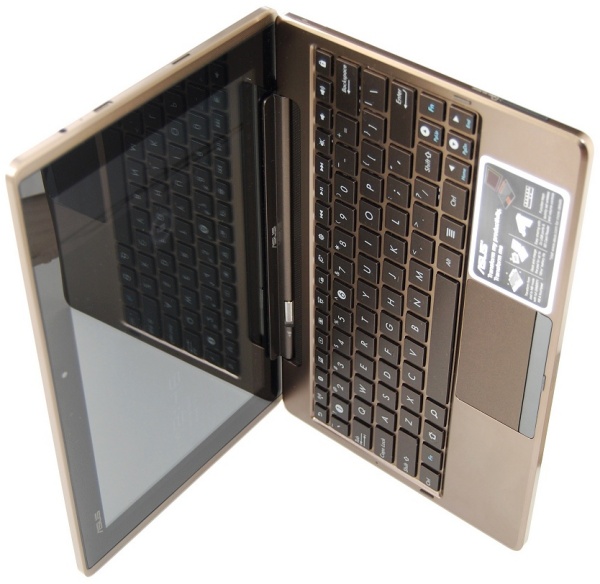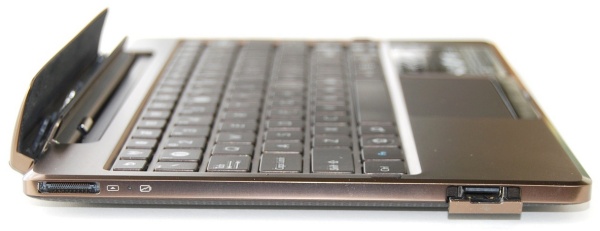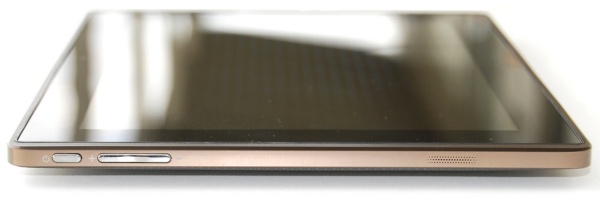Inside the Eee Pad Transformer
The typical specifications for an Android (Honeycomb 3.x) device include the Nvidia dual-core Tegra 2 1GHz processor with 1GB of RAM, and this is exactly how the Asus Eee Pad Transformer has been outfitted.
The official model number for the Tegra 2 chip is "Tegra 250 T20" which uses a 40nm design process and is based on the ARMv7 CPU instruction set. It features a 1GHz dual-core ARM Cortex-A9 CPU combined with the GeForce ULP (Ultra Low Power), which works at 333MHz and single-channel LPDDR2 DDR2 667MHz memory module on the same board.
Also included is 16GB or 32GB of internal storage and a MicroSD slot for optional storage expansion, a mandatory 3.5mm audio jack and Mini-HDMI port.


Asus includes a pair of cameras, a 1.2MP camera at the front for video chatting and a more powerful 5MP unit at the rear for taking photos. The 5MP camera's photo quality is similar to what you usually find in mobile devices, and that is to say the quality is average. The same can be said about video, which doesn't track very well and is quite blurry.

The Eee Pad Transformer has been given a 10.1" IPS LED backlit screen fitted with scratch resistant glass and a 178° wide viewing angle. The screen features a native resolution of 1280x800 (WXGA). This means the Eee Pad Transformer features a slightly larger screen with a slightly higher resolution when compared to the iPad 2.
For network support users can rely on Wireless LAN 802.11b/g/n connectivity. We found its range to be acceptable. There's also Bluetooth 2.1 + EDR support which will be much appreciated by those with Bluetooth mice for example, as it removes the need for an annoying dongle.
Keeping the Eee Pad Transformer alive is a 24.4Wh Li-polymer battery which is said to provide 9.5 hours of operating time. However the TF101 docking station, which features its own battery pack, extends uptime by another 6.5 hours according to Asus.
When testing on our own we found that both batteries would often run out of juice after about 15 hours, which is a very good effort. Without the docking station the Eee Pad Transformer is good for at least 9 hours, which makes Asus' estimation fairly accurate.
The docking station also provides a full QWERTY keyboard and trackpad, which turns the Eee Pad Transformer into a netbook computer.

There are also a pair of USB 2.0 ports on the docking station, which gain importance on netbook mode, as Asus omitted them on the actual pad itself. A second card reader (MMC/SD/SDHC) included on the docking station means that storage can be expanded even further.

It's worth pointing out that the USB ports support flash drives using NTFS, meaning they support files larger than 4GB.


The docking station can be attached to the pad using a 40-pin connector. When connected to the power outlet, the tablet battery is charged through the docking station.
Finally the Eee Pad Transformer features a number of sensors which includes a G-Sensor, Light Sensor, Gyroscope, E-Compass and GPS.
